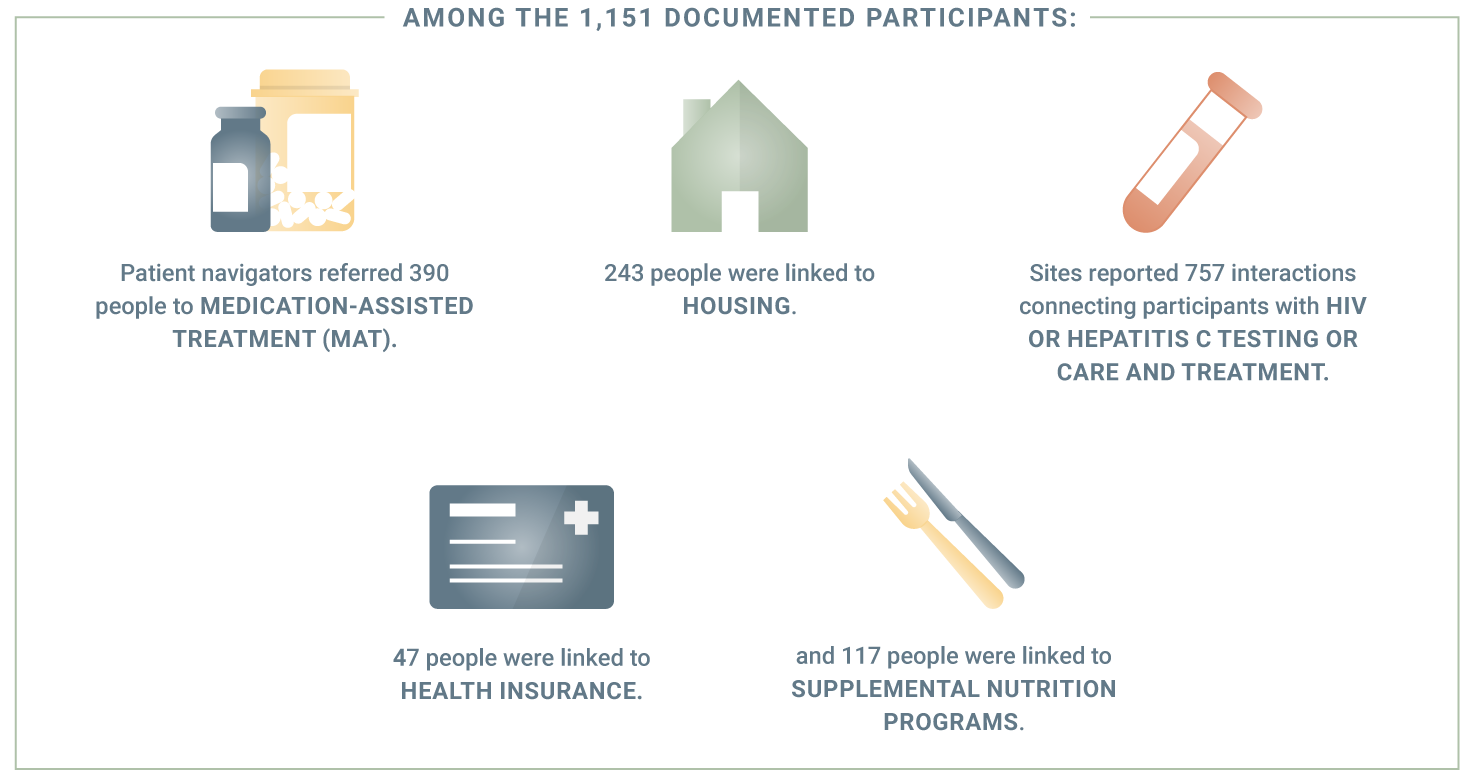In 2019, NASTAD Drug User Health received CDC funding to oversee a demonstration project that would fund syringe services programs (SSPs) to provide patient navigation services for participants. Between 2020 and 2022, eight SSPs around the United States developed and implemented patient navigation services to facilitate engagement with medical and social services for people who use drugs (PWUD).
This microsite contains background, lessons learned through program experiences during the project, and resources for the development and operation of SSP-based patient navigation services.
For this project, we define patient navigation as an intervention, used in a variety of public health and clinical care settings, to support patients in accessing appropriate care and resources. With high morbidity and mortality from the ongoing overdose crisis in the United States, patient navigation is a promising strategy for engaging with and extending services to people who use drugs, whose experiences of stigma, discrimination, and criminalization lead to inadequate treatment from traditional healthcare systems and social service providers.
By locating patient navigation services for people who use drugs within existing SSPs and other harm reduction programs, we can encourage the development of humanizing and sustainable networks of care and improve health and safety outcomes for participants and their communities.
Key Outcomes
Patient navigation programs within SSPs are profoundly effective at connecting PWUD to services and supporting participants in care when properly resourced. Across the eight sites, more than 1,151 people engaged navigation services.
Lessons Learned
The Patient Navigation Demonstration Project tells us that:
- The pandemic shifted health priorities among participants. Responding to emergent needs—including sharing COVID-19 prevention and response information, connecting to testing and vaccination, and navigating lockdowns and quarantines—was an important way for navigators to demonstrate utility and build trust.
- Several participating programs had existing co-located services that were not regularly accessed by SSP participants. Patient navigation services often included connecting participants to internal services and, in the long-term, building organizational capacity for working with PWUD.
- The effectiveness of navigation services was limited by the lack of cultural humility among other community providers and systems of care, often resulting in substandard care for SSP participants.
- SSPs are naturally positioned to provide patient navigation, with their focus on relationship building and noncoercive resource provision; however, the time, energy, and innovation required to build and maintain relationships are not easily represented in traditional data collection and reporting methods.
- Hiring and supporting the long-term success of people with lived and/or living experience with drug use, houselessness, and the criminal-legal system is imperative for effective patient navigation.
- Future funding for SSP-based navigation services should ideally support more than one full-time staff position to encourage sustainability, staff retention, and maximize opportunities for relationship-building and community outreach.
The project offered an opportunity to formalize and document work that may have already been ongoing through general SSP services. The primary barrier to expanding SSP-based navigation for PWUD is sustainable and flexible funding for dedicated patient navigation staff time.
For more information about the Patient Navigation Demonstration Project and guidance for SSP-based navigation services, please contact DrugUserHealthTA@NASTAD.org.
This project is supported by the Centers for Disease Control and Prevention of the U.S. Department of Health and Human Services (HHS) as part of PS 19-1909: National Harm Reduction Technical Assistance and Syringe Services Program Monitoring and Evaluation Funding Opportunity cooperative agreement, a financial assistance award totaling $6,775,000 with 100 percent funded by CDC/HHS. The contents are those of the author(s) and do not necessarily represent the official views of, nor an endorsement, by CDC/HHS, or the U.S. Government.



